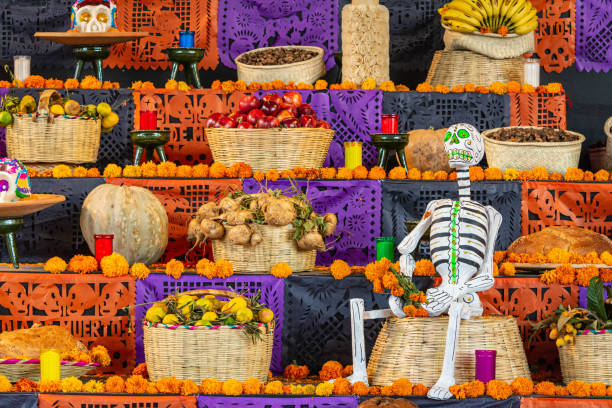“Honoring Ancestors: Exploring the Timeless Traditions of the Day of the Dead”
The Day of the Dead, or Día de los Muertos, is a vibrant and deeply significant celebration observed in many Latin American countries, particularly in Mexico. This tradition-rich occasion is a heartfelt commemoration where families and communities come together to honor and remember their departed loved ones.
The Essence of the Day of the Dead:
Día de los Muertos spans several days, generally from October 31st to November 2nd. Contrary to its name, the atmosphere during this celebration is not one of mourning but rather a joyful and colorful tribute to those who have passed away. It’s believed that during this time, the spirits of the deceased return to join their living relatives.
Symbolism and Traditions:
1.Ofrendas (Altars)
Families create elaborate ofrendas adorned with marigolds, candles, photos, and the favorite foods and belongings of the departed. These altars are intended to welcome and honor the souls of the deceased.
2. Calaveras (Sugar Skulls)
Intricately decorated sugar skulls represent departed souls and are a prominent symbol of the Day of the Dead. They are often personalized with the names of loved ones to honor their memory.
3. Pan de Muerto (Bread of the Dead)
This sweet bread, often adorned with bone-shaped dough, is a culinary centerpiece of the celebration, symbolizing the cycle of life and death.
4. Cemetery Visits:
Families gather in cemeteries to clean and decorate the graves of their loved ones. They spend time in prayer, reflection, and celebration, often accompanied by music, dance, and storytelling.
5. Marigolds and Candles:
Marigolds, with their vibrant colors and distinctive scent, are used to decorate altars and graves. Candles are lit to guide the spirits back home.
Cultural Significance:
The Day of the Dead is a time-honored tradition that reflects the cultural amalgamation of indigenous Aztec rituals and Catholic influences. It embodies a beautiful blend of remembrance, reverence, and festivity, emphasizing the idea that death is a natural part of the human experience.
The Continuation of Tradition:
The celebration of Día de los Muertos has not only endured through generations but has also gained popularity and recognition beyond Latin America. Its significance lies not only in the colorful festivities but in the heartfelt sentiment of keeping the memories of departed loved ones alive.
Honoring Ancestors and Keeping Memories Alive:
The Day of the Dead is a profound and beautiful tribute to the departed, emphasizing the belief that the spirits of our loved ones live on through memory and the traditions that honor them. It serves as a reminder that while they may no longer be physically present, their essence and influence continue to be a vital part of our lives.
In conclusion, the Day of the Dead is a time-honored and culturally rich celebration that not only celebrates the lives of ancestors but also strengthens the bonds between past, present, and future generations, fostering a sense of unity, remembrance, and love for those who have departed.

